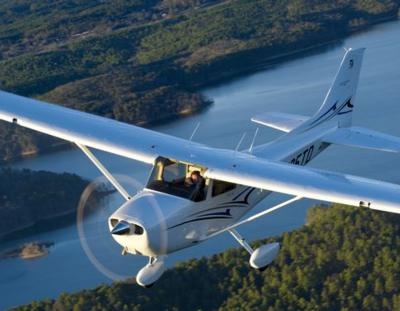Tue, May 08, 2018
Non-IFR Pilot Was Flying On A Moonless Night Over The Ocean
The NTSB has released a probable cause report from an accident which occurred on July 4, 2016, about 2300 Pacific daylight time. A Cessna 172F impacted the Pacific Ocean shortly after takeoff from Brookings Airport (BOK), Brookings, Oregon. The private pilot and two passengers were fatally injured, and the airplane was destroyed. The airplane was registered to Cessna 7870U, LLC, and was operated by the pilot as a personal flight. Night VFR conditions prevailed for the third leg of the cross-country flight, and no flight plan was filed. The destination was Grants Pass Airport, Grants Pass, Oregon.

According to the report, the non-instrument-rated pilot departed for the third leg of a cross-country flight in the airplane during dark (moonless) night conditions. The departure path was toward the ocean and over an area with few ground-based light sources to provide visual cues. A witness heard an airplane flying nearby and assumed that it was taking off from the airport. As the airplane continued, he heard a reduction in engine power, like a pilot throttling back while landing.
According to the witness, the engine did not sputter. Review of the recorded radar data showed that the airplane turned left shortly after takeoff and climbed to about 700 ft above ground level as it passed near the witness's location. The airplane did not arrive at its destination, and a search was initiated. The wreckage of the airplane was found in ocean waters about 2 miles west of the departure airport. Although visual meteorological conditions prevailed, no natural horizon and few external visual references were available during the departure. This required the pilot to monitor the flight instruments to maintain awareness of the airplane's attitude and altitude. Given the lack of external visual cues and the the pilot's lack of recent night flight experience and his lack of an instrument rating, it is likely that the pilot became spatially disorientated during the departing left turn.
The main wreckage was not recovered. Therefore, it could not be determined whether any preimpact mechanical malfunctions or anomalies were present.
The National Transportation Safety Board determines the probable cause(s) of this accident to be the pilot's spatial disorientation and loss of situational awareness during the departure turn in dark night conditions, which resulted in an in-flight collision with water.
(Source: NTSB news release. Image from file. Not accident airplane)
More News
Also: SkyReach Parts Support, Piper Service Ctr, Airliner Near-Miss, Airshow London The Judge overseeing Icon's convoluted Chapter 11 process has approved $9 million in Chapter 11 >[...]
ILS PRM Approach An instrument landing system (ILS) approach conducted to parallel runways whose extended centerlines are separated by less than 4,300 feet and at least 3,000 feet >[...]
Aero Linx: FlyPups FlyPups transports dogs from desperate situations to fosters, no-kill shelters, and fur-ever homes. We deliver trained dogs to veterans for service and companion>[...]
Also: Skydio Chief, Uncle Sam Sues, Dash 7 magniX, OR UAS Accelerator US Secretary of the Air Force Frank Kendall was given a turn around the patch in the 'X-62A Variable In-flight>[...]
Also: NBAA on FAA Reauth, DJI AG Drones, HI Insurance Bill Defeated, SPSA Airtankers The Beechcraft Denali continues moving forward towards certification, having received its FAA T>[...]
 Airborne 05.10.24: Icon Auction, Drunk MedEvac Pilot, Bell ALFA
Airborne 05.10.24: Icon Auction, Drunk MedEvac Pilot, Bell ALFA ANN's Daily Aero-Term (05.13.24): ILS PRM Approach
ANN's Daily Aero-Term (05.13.24): ILS PRM Approach ANN's Daily Aero-Linx (05.13.24)
ANN's Daily Aero-Linx (05.13.24) Airborne-NextGen 05.07.24: AI-Piloted F-16, AgEagle, 1st 2 WorldView Sats
Airborne-NextGen 05.07.24: AI-Piloted F-16, AgEagle, 1st 2 WorldView Sats Airborne 05.08.24: Denali Update, Dad-Daughter Gyro, Lake SAIB
Airborne 05.08.24: Denali Update, Dad-Daughter Gyro, Lake SAIB



